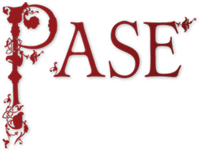Table of Contents
Top of page
Name
Summary
Distribution Map
Property List
Profile
Bibliography
Bottom of page
Wynric 2
Wynric ‘of Wincot’ (Glos.), fl. 1066
Male
CPL
4 of 5
Summary
Wynric 2 was a small landowner in north-east Gloucestershire whose single manor of 3 hides was worth £4. If he was the unnamed thegn holding the rest of Wincot, then he had 6 hides worth £6. Wincot may have been named from him.Distribution map of property and lordships associated with this name in DB
List of property and lordships associated with this name in DB
Holder 1066
| Shire | Phil. ref. | Vill | DB Spelling | Holder 1066 | Lord 1066 | Tenant-in-Chief 1086 | 1086 Subtenant | Fiscal Value | 1066 Value | 1086 Value | Conf. | Show on Map |
|---|---|---|---|---|---|---|---|---|---|---|---|---|
| Gloucestershire | 33,1 | Wincot | Wenric | Wynric 'of Wincot' | - | William the chamberlain | - | 3.00 | 4.00 | 4.00 | A | Map |
| Totals | ||||||||||||
Profile
There were two holdings at Wincot, in a corner of north-east Gloucestershire intermingled with detached parts of other shires. Each was of 3 hides, but the other details do not match at all, and the two holdings were presumably distinct. The hamlet of Wincot was later divided between the parishes of Clifford Chambers and Quinton (VCH Glos. VI, 207), an arrangement perhaps foreshadowed in the two pre-Conquest holdings. One of the holdings at Wincot was Wynric’s; the other was listed among the ‘lands of other thegns . . . under the authority (in sua potestate)’ of the west country magnate Beorhtric son of Ælfgar (Beorhtric ) as lord of Tewkesbury (Glos. 1:42). Its actual holder TRE was an unnamed thegn.Wincot (Wenecote) may well have been named from Wynric 2: the first element of the place-name is a monothematic personal name identical with the first element of Wynric’s name (PN Glos. I, 240). Dithematic personal names were certainly sometimes abbreviated to their first element. The rarity of names in wynn– supports this idea: otherwise it would be quite a coincidence for a Wyn– to have as his only manor a place named after a Wynn–. This example was not listed by von Feilitzen (1937: 32–3) among the Domesday place-names which incorporate the name of the TRE owner.
The second element of the place-name was OE cot, literally ‘cottage’, but the singular form of the element as recorded in DB may well have originated as a plural, as in many other –cot names (Ekwall 1960: 124; PN Elements, I, 108–9). Wincot certainly contained more than a single habitation in 1066 (there were eleven families in 1086), and it may always have been a collection of cottages (in the plural), a hamlet.
If Wincot really was ‘Wyn(ric)’s hamlet’, the implications must surely be, first, that Wynric was the unnamed thegn holding the 3 hides attached to Tewkesbury, and, second, that the whole of Wincot had recently taken its name from him because for the first time the part attached to Tewkesbury and the other part had come under the same ownership.
The Tewkesbury part of Wincot passed with Beorhtric son of Ælfgar’s other lands to Queen Matilda (d. 1083) and so was in the king’s hands in 1086. The queen had given it to Reynold the chaplain, but whether he still held from the king in 1086 is not clear, since DB says nothing about its current tenure.
Wynric’s manor went to William the chamberlain as his only manor in Gloucestershire. It is not clear whether he was the same William the chamberlain who had four manors in Bedfordshire and Buckinghamshire (Beds. 40:1–3; Bucks. 32:1), as even those four manors did not descend together (VCH Beds. III, 344, 423, 449; VCH Bucks. II, 297), let alone with Wincot. This part of Wincot seems to have been united (or reunited) with the Tewkesbury part, since there was later seemingly a single manor of Wincot, extending into both parishes (Clifford Chambers and Quinton), and in the hands of a family named Wincot from the twelfth century until 1531 (VCH Glos. VI, 210). The apparent reunification of Wincot after 1086 may provide tangential supporting evidence for the idea that Wynric had held the whole vill in 1066.
Wincot and Sawbury (Herefs.) are over 35 miles apart and there are no other circumstances which recommend the idea that Wynric 2 was the same person as Wynric 3.
Bibliography
Ekwall 1960: Eilert Ekwall, The Concise Oxford Dictionary of English Place-Names, 4th edn (Oxford: Clarendon Press, 1960)
PN Elements: A. H. Smith, English Place-Name Elements, 2 vols, English-Place-Name Society 25–6 (Cambridge: Cambridge University Press, 1956)
PN Glos.: A. H. Smith, The Place-Names of Gloucestershire, 4 vols, English Place-Name Society 38–41 (Cambridge: Cambridge University Press, 1964–5)
VCH Beds.: The Victoria History of the Counties of England: The Victoria History of the County of Bedford, ed. William Page [and H. A. Doubleday], 3 vols and index (London, 1904–14)
VCH Bucks.: The Victoria History of the Counties of England: The Victoria History of the County of Buckingham, ed. William Page, 4 vols and index (London, 1905–28)
VCH Glos. VI: The Victoria History of the Counties of England: The Victoria History of the County of Gloucester, ed. C. R. Elrington (London: Oxford University Press for the Institute of Historical Research, 1965)
